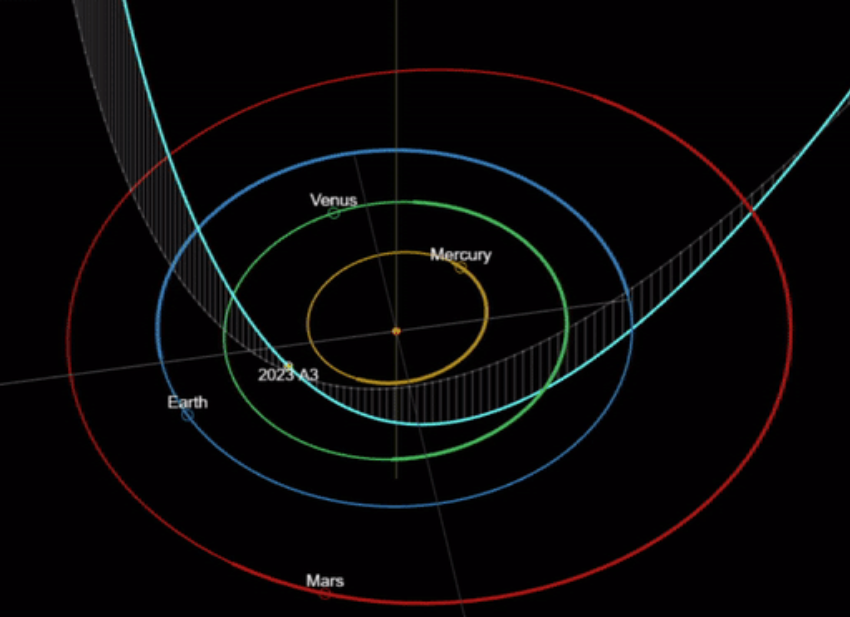This story originally appeared on WIRED en Español and has been translated from Spanish.
C/2023 A3, also known as Tsuchinshan–ATLAS and considered “the comet of the century,” will appear in all its splendor in our sky during September and October 2024. Due to its characteristics, astronomers believe it will be exceptionally bright, similar to Halley’s comet in 1986 or NEOWISE in 2020.
Comets like C/2023 A3 are balls of frozen gases, rocks, and dust that orbit the sun. They are often spectacular because of two physical phenomena that occur during their journey.
The first is the tail, which stretches out from the nucleus of the comet as it gets closer to the star that it’s orbiting. Solar radiation from the star—in our case the sun—vaporizes some of the comet’s frozen material, blowing gas and dust away from the nucleus that then reflects the star’s light. As a comet gets closer to its star, it’s tail grows in size because of the increase in solar radiation.
The second phenomena is the comet’s coma. This is an envelope of sublimated ice that forms a kind of atmosphere around the nucleus as it approaches its star, again because of solar radiation. This also enhances the comet’s brightness.
What Is the Best Day to See the Comet?
C/2023 A3 will shine in the northern hemisphere sky from September 27 and will remain visible until the last week of October. During this period, the comet will reach its minimum distance from the sun, before beginning its journey back out of the solar system.
According to the specialized blog Cometography, the day when C/2023 A3 will shine the brightest will be October 2. The comet’s tail will be long and spectacular at this point due to its proximity to the sun.
At What Time Will the Comet Be Visible?
Because of its proximity to the sun, the comet will behave similarly to Mercury and Venus: It will be seen near the horizon, in the path of the sun, and just before sunrise. An appropriate window to admire it will be between 5 am and 7 am from September 27 onwards. The timing and position will be similar across the northern hemisphere.
As October progresses, the comet will elevate its position in relation to the horizon and at the same time lose brightness. Since Tsuchinshan–ATLAS is a long-orbiting body and comes from the Oort cloud, beyond the edge of the solar system, it will not appear again in our skies for tens of thousands of years.
Services Marketplace – Listings, Bookings & Reviews

